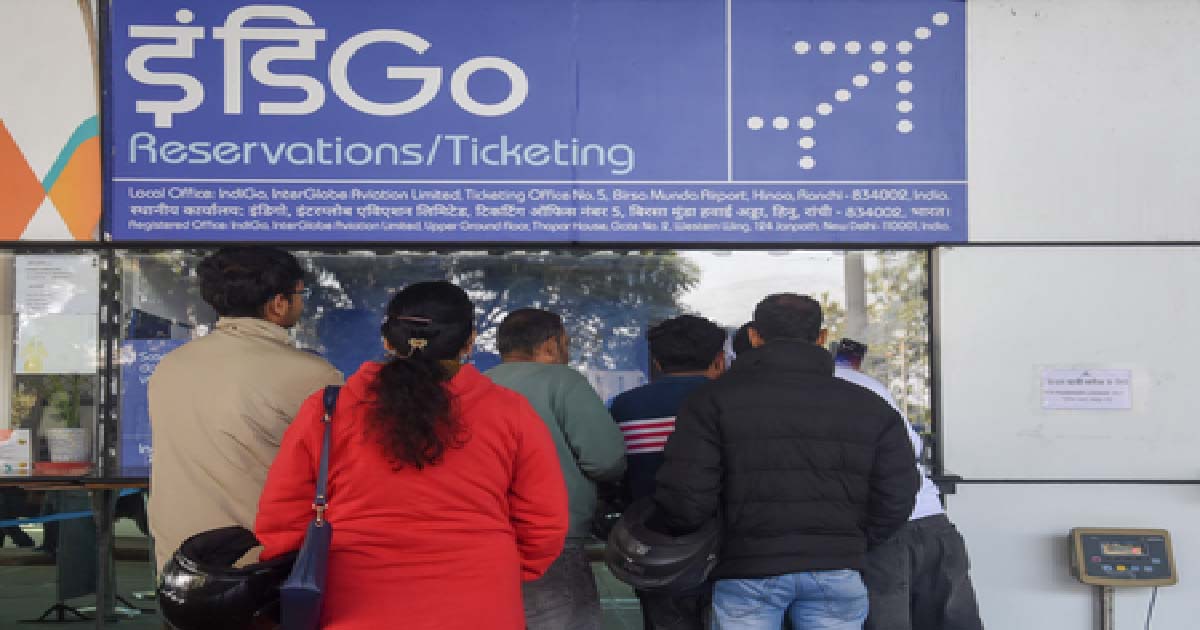Business
Tips you need to know about account security on KuCoin

In a bid to help its users identify different kinds of scams in the world of crypto, leading crypto exchange KuCoin, also known as ‘People’s exchange’, has shared some tips that will also help users to secure their accounts.
According to Johnny Lyu, CEO KuCoin, “in most emerging industries, scams and frauds are quite common as there will be plenty of newcomers while there are few places to learn. This is what is happening to crypto”.
“As the industry is evolving, so are the scams. Presently cloned websites are one of the most common scams. Also, we’ve seen scams like fake ICOs, fake airdrops, exit scams, phishing emails, fake admins and so forth. To deal with it, keep learning and DYOR is essential, especially in crypto where we have new things almost every day. That’s why I always say learning is earning,” Lyu explained.
For major players like KuCoin, “it’s our responsibility to educate the beginners, trying our best to protect them”.
“So, we are constantly posting educational posts, articles and videos on our owned channels, and we are going to launch more investor education programs globally,” Lyu added.
Here are the tips that users need to know about account security on KuCoin.
Anti-phishing safety phrase (email/login/withdrawal safety phrase): To prevent situations like phishing emails and phishing sites, KuCoin accounts have an anti-phishing security function. Users can set a security anti-phishing safety phrase (such as a motto, etc.) on their KuCoin account.
When logging into the website or receiving an email, a safety phrase will be displayed in the email from KuCoin or the login window. If the safety phrase is not displayed or incorrect, it means that users are on a phishing site or have received a phishing email and therefore should not proceed any further.
Login IP restriction: Users will be logged out automatically when their login IP changes. With this feature, attackers will not be able to log in to your account with the hacking actions.
Setting up KuCoin login and password in a proper way: The company said that there are two basic rules to set a proper login password — never make a password too easy and set a unique password for the KuCoin account. Usually, it is recommended that your password should contain uppercase, lowercase letters, numbers, and even special characters to increase the security level of your password.
Please note that to prevent potential attackers from locking users out of their accounts, there is a 24-hour withdrawal limitation once a password change action happens to the KuCoin account.
Enable two-factor authentication (2FA): Activating two-factor authentication (2FA) is also the priority to protect your KuCoin account and crypto-assets. KuCoin supports two types of 2FA — SMS and Google Authentication.
Set the list of usual withdrawal addresses: In KuCoin, there is a security feature called Address Book which allows users to limit the wallet addresses so that it can be secure and convenient after setting your usual withdrawal addresses.
KuCoin Official Media Verification: To prevent any fraud in the name of KuCoin, the company recommends that users can confirm an official KuCoin contact or domain by entering the telephone number, email, WeChat, Telegram, Skype, Twitter, or website address through the exclusive KuCoin Official Media Verification.
KYC verification: KYC can effectively reduce fraud, money laundering, and terrorist financing, among other malicious activities. In KuCoin, the company suggests users complete the KYC verification. For verified accounts, the users can enjoy a higher daily withdrawal limit and participate in the Fiat-Crypto service provided by KuCoin.
Meanwhile, the company said it aims to protect users’ privacy and assets from infringement. Its security team has constantly been improving related mechanisms and performing periodic reviews to protect usersae privacy and assets.
Business
IndiGo Crisis Day 8: Mumbai Hit Hard As Flight Chaos Enters Day 8; Over 30 Cancellations Snarl City’s Air Travel

Mumbai: air travel operations remained disrupted on Tuesday as IndiGo’s nationwide aviation crisis stretched into its eighth consecutive day, causing large-scale cancellations and commuter chaos across the country. But Mumbai, one of IndiGo’s busiest and most critical hubs, continued to bear a brunt of the meltdown, with passengers facing uncertain schedules and repeated last-minute cancellations.
By 9:30 am, Chhatrapati Shivaji Maharaj International Airport had already logged 31 IndiGo cancellations, including 14 inbound flights and 17 outbound departures. Long queues, anxious passengers and repeated rescheduling announcements dominated Terminal 2 through the morning peak hours, leaving thousands scrambling to adjust their plans.
Across India, more than 200 IndiGo flights were cancelled today. Bengaluru topped the list with 121 cancellations, followed by Hyderabad (58), Chennai (41) and Kerala with four. But for Mumbai passengers, many of whom rely on IndiGo for frequent business and leisure travel, the interruptions continued to be especially disruptive.
The turmoil, which began last Tuesday, has snowballed into a full-blown operational crisis. Over 4,500 flights have been cancelled between last week and Monday. Even though IndiGo claimed on Sunday that operations were ‘stabilising,’ the airline saw over 500 fresh cancellations on Monday alone, leaving passengers stranded overnight at multiple airports, including Mumbai.
The root of IndiGo’s meltdown has been linked to the airline’s inability to implement the second phase of India’s updated Flight Duty Time Limitations (FDTL), which came into effect in November. The revised norms, aimed at cutting pilot fatigue and extending rest periods, required IndiGo to restructure crew rosters. However, the airline has reportedly been struggling with a pilot shortage, leading to a mismatch between the new regulations and its available manpower.
To reduce pressure on airlines and mitigate the ongoing disruption, aviation regulator DGCA temporarily relaxed certain night-duty and weekly rest requirements for pilots. This relaxation is expected to help airlines stabilise operations through emergency rostering flexibility.
Civil Aviation Minister Ram Mohan Naidu told Parliament that IndiGo did not raise any concerns during a crucial meeting on December 1, just a day before the cancellations spiralled. He attributed the chaos to the airline’s internal system rather than regulatory pressure.
The government has now decided to sharply cut IndiGo’s winter schedule. The airline, which operates 2,200 flights a day and commands nearly 60 per cent of the domestic market, will see its schedule curtailed, with several routes handed to other carriers to prevent further passenger inconvenience.
Business
LT Foods drops over 6.5 pc, other Indian rice stocks also slide

Mumbai, Dec 9: Shares of leading Indian rice companies fell sharply on Tuesday, after US President Donald Trump hinted that he may impose fresh tariffs on agricultural imports, specifically targeting Indian rice and Canadian fertilisers.
The statement triggered immediate selling in stocks linked to the rice trade. LT Foods was the biggest loser, with its share price slipping 6.85 per cent to Rs 366.55.
Shares of KRBL also declined, falling 1.14 per cent, while GRM Overseas dropped 4.46 per cent.
The sudden slide reflected investor concerns that any new US tariffs could hurt export demand and impact earnings for these companies.
Trump made his remarks during a White House event where he announced new support measures for US farmers.
His comments come at a time when trade tensions between the United States and India continue to resurface.
India remains the world’s largest rice producer, with an output of 150 million tonnes and a 28 per cent share in global production.
It is also the top exporter, accounting for 30.3 per cent of global rice exports in 2024–2025, data from the Indian Rice Exporters Federation showed.
Despite this large global presence, India’s rice exports to the US are relatively small.
According to the India Brand Equity Foundation, India shipped around 234,000 tonnes of rice to the US in the 2024 financial year, which is less than 5 per cent of its total global basmati exports of 5.24 million tonnes.
West Asian countries remain the biggest buyers of Indian rice. Among the varieties exported worldwide, the Sona Masoori variety is especially popular in markets like the US and Australia.
The US, under Trump’s leadership, has already imposed steep tariffs on India, including a 50 per cent tariff — its highest — along with a 25 per cent levy on India’s Russian oil imports.
Business
IndiGo disruptions may cause revenue loss, penalties to company: Report

New Delhi, Dec 8: Widespread flight disruptions at IndiGo are credit negative, and refunds and compensation could cause it “significant financial damage”, credit rating agency Moody’s warned on Monday.
In a note, Moody’s said that regulatory penalties from the Directorate General of Civil Aviation (DGCA) remain possible as the airline failed to plan for aviation rules communicated over a year earlier.
The crisis struck as the airlines entered their peak winter schedule, with “significant lapses in planning, oversight and resource management” as the Phase 2 of the Flight Duty Time Limitation (FDTL) rules were introduced on November 1, 2025, after being communicated more than a year earlier, it noted.
The rules reclassified midnight–6 a.m. duties as night duty and cut permissible landings in 24 hours from six to two or three. The agency said that IndiGo’s lean operating model lacked resilience to integrate the change, forcing a system‑wide schedule reset.
Over 1,600 flights were cancelled on December 5, and over 1,200 were grounded in November, with cancellations beginning on December 2. Moody’s said IndiGo is yet to fully restore normal operations.
IndiGo said it was set to operate over 1,800 flights on Monday, up from 1,650 on Sunday, adding that more than 4,500 bags have been delivered to respective customers, and “we are on track to deliver the rest in the next 36 hours”.
The airline said it expects a return to full schedules by mid-December, adding that it is working “round the clock” to normalise operations.
It has so far refunded Rs 827 crore to affected passengers, and the rest is under process for cancellations up to December 15.
Union Civil Aviation Minister K. Rammohan Naidu said in the Parliament on Monday that the government has initiated a thorough inquiry into the matter.
“IndiGo was supposed to manage the crew and roster…We will take strict action. We will set an example for every airline. If there is any non-compliance, we will take action,” he said on the floor of the Rajya Sabha.
-

 Crime3 years ago
Crime3 years agoClass 10 student jumps to death in Jaipur
-

 Maharashtra1 year ago
Maharashtra1 year agoMumbai Local Train Update: Central Railway’s New Timetable Comes Into Effect; Check Full List Of Revised Timings & Stations
-

 Maharashtra1 year ago
Maharashtra1 year agoMumbai To Go Toll-Free Tonight! Maharashtra Govt Announces Complete Toll Waiver For Light Motor Vehicles At All 5 Entry Points Of City
-

 Maharashtra1 year ago
Maharashtra1 year agoFalse photo of Imtiaz Jaleel’s rally, exposing the fooling conspiracy
-

 National News1 year ago
National News1 year agoMinistry of Railways rolls out Special Drive 4.0 with focus on digitisation, cleanliness, inclusiveness and grievance redressal
-

 Maharashtra1 year ago
Maharashtra1 year agoMaharashtra Elections 2024: Mumbai Metro & BEST Services Extended Till Midnight On Voting Day
-

 National News1 year ago
National News1 year agoJ&K: 4 Jawans Killed, 28 Injured After Bus Carrying BSF Personnel For Poll Duty Falls Into Gorge In Budgam; Terrifying Visuals Surface
-

 Crime1 year ago
Crime1 year agoBaba Siddique Murder: Mumbai Police Unable To Get Lawrence Bishnoi Custody Due To Home Ministry Order, Says Report












